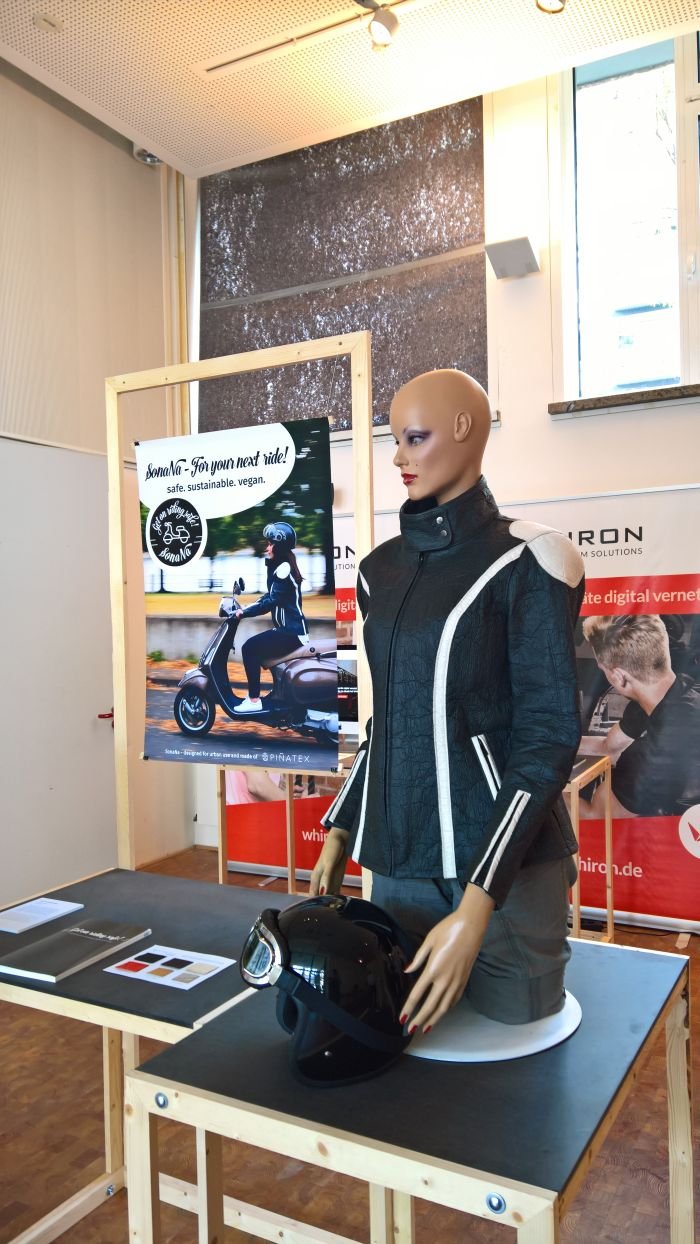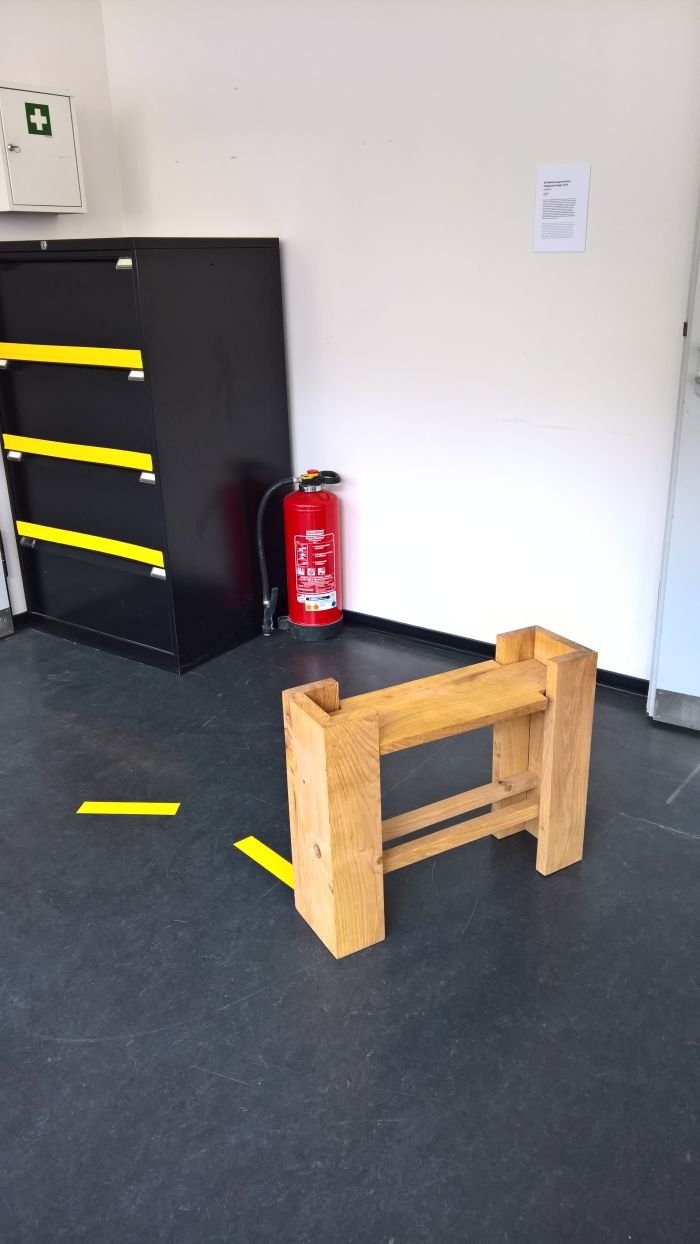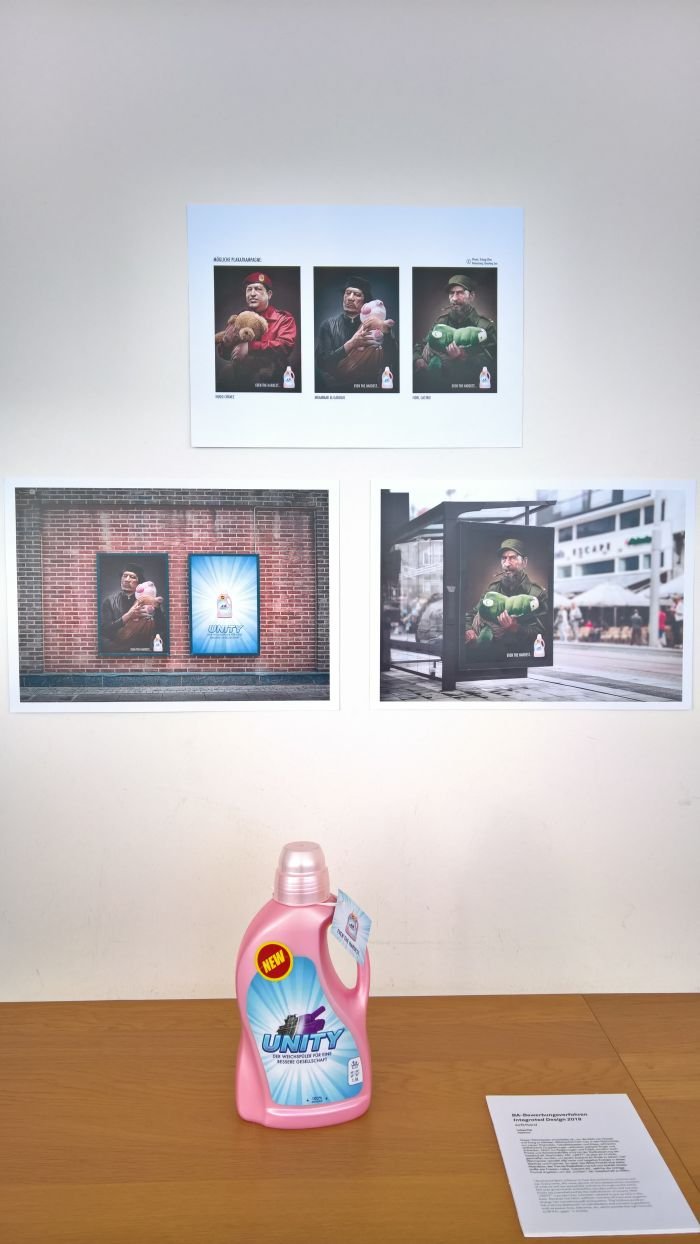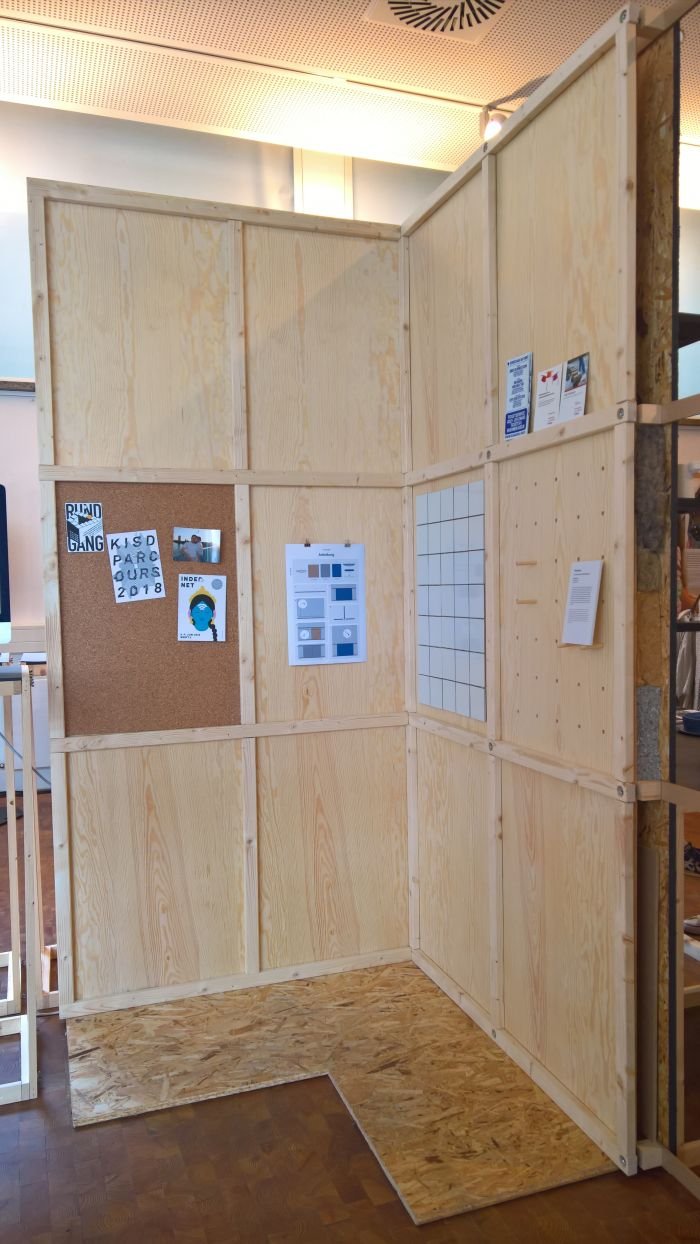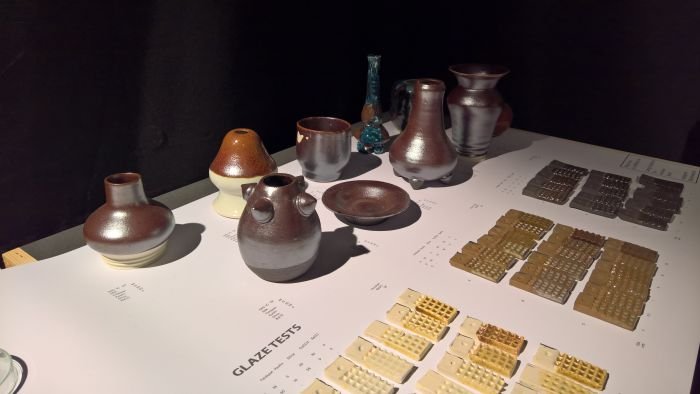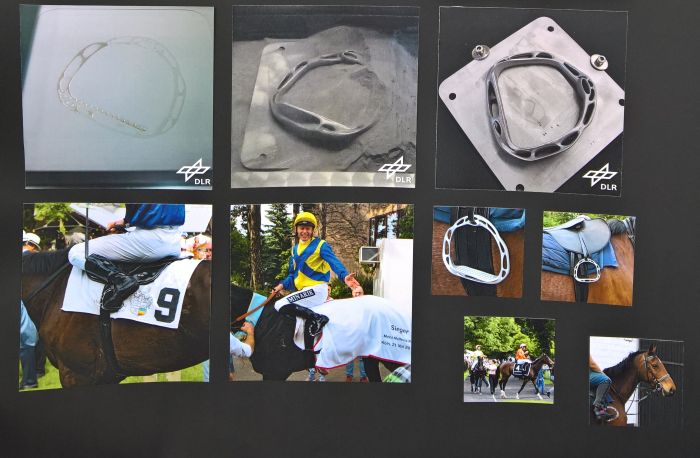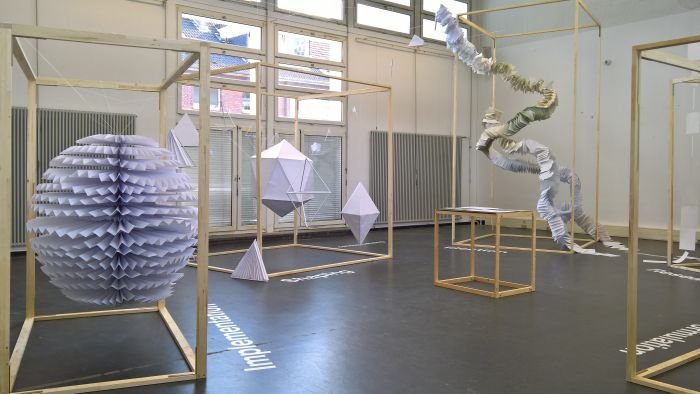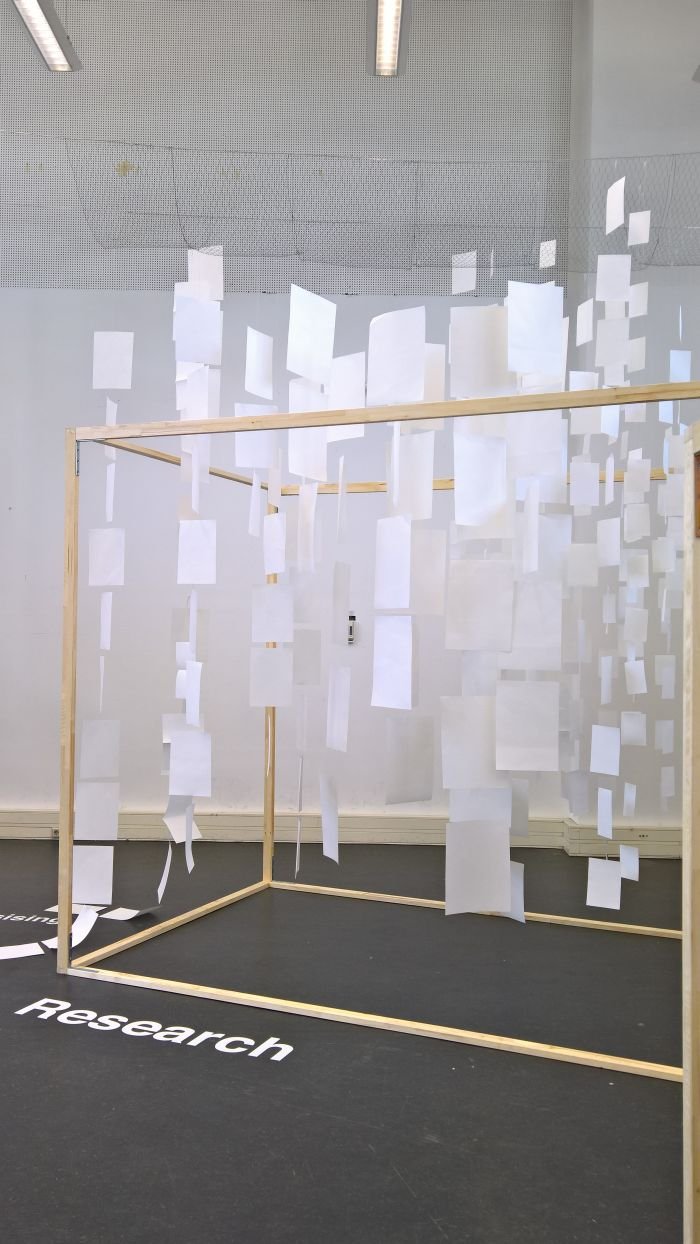Derived from the French parcourir, the parcours is perhaps historically most popularly associated with equine show-jumping, the challenge of negotiating an artificial obstacle course; more recently it has become popular in context of human show-jumping, the challenge of negotiating an urban obstacle course.
Approaching the Köln International School of Design 2018 KISDparcours semester and graduation exhibition we hoped the obstacles to be negotiated would be of the mental, philosophical, type......
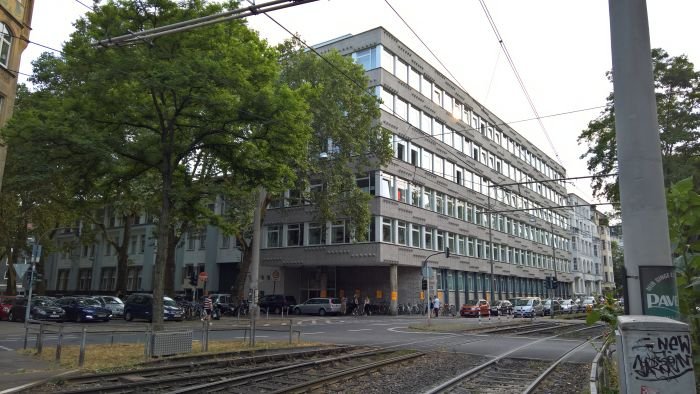
Established in 1991 in the wake of the closure of the former Kölner Werkkunstschule, events documented in the Kölnisches Stadtmuseum's exhibition Endstation Ubierring 40, we discussed the history of the Köln International School of Design, KISD, in our post from KISDparcours 2016, and so will skip past them here. Or perhaps better put, and keeping with the theme, elegantly somersault over them, maintaining as we do a taught, muscular bearing.
Presenting the results of both semester classes and graduation projects from across the school's undergraduate and postgraduate programmes, a particular highlight of the 2018 KISDparcours was the presentation Soft Skills/Hard Skills which presented works submitted by applicants as part of the selection procedure for the Integrated Design Bachelor programme. Something we're not aware of having ever experienced before and of which we greatly approve. On the one hand, an annual exhibition such as KISDparcours is partly advertising for the school, part of the process by which they hope to recruit new students, and such a presentation of application projects helps explain to potential applicants what is expected of them. And on the other it helps explain to third parties what is involved in a design degree, who is, or is not, suitable for such, and also provides for a slightly deeper understanding of the school, how it ticks, than can be elucidated from the semester/graduation projects alone. Specifically Soft Skills/Hard Skills asked applicants to develop a work corresponding to the theme Soft/Hard. For our part we didn't get past the Belle and Sebastian earworm the project brief gave us, "we all know you're soft 'cause we've all seen you dancing / We all know you're hard 'cause we all saw you drinking from noon until noon again." The applicants did get further, Lukas Piel, for example, developed Unity, a fabric softer for the social fabric, a product that turns those more abrasive characters into ones you might want to spend time with, while Jule Arden developed a stool where the seat is "supported" by neodymium magnets, meaning the buoyancy and give is only understood upon sitting. The apparently hard wooden stool being in reality much softer.
Particularly barbarous is that the Soft Skills/Hard Skills presentation took place in the same room as the application presentation and selection interviews occur, it may have been Room 122 we couldn't help thinking it should have been Room 101.
We hope all left it in a better state than Winston, Julia, et al. And that all the projects presented at KISDparcours 2018 were successful.
And then once they were in ......
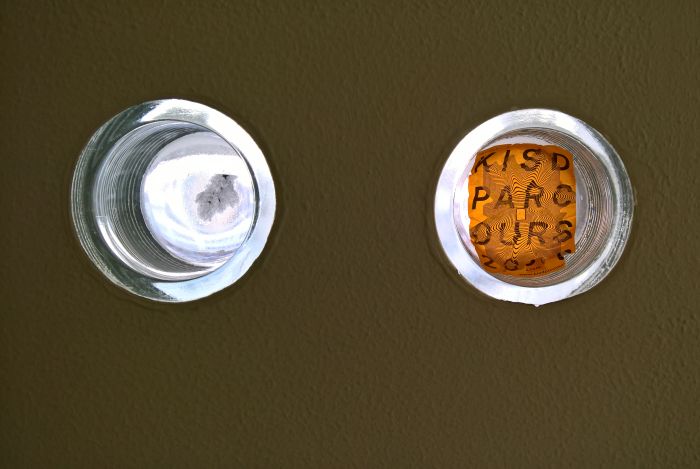
One of the regular highlights at the Köln International School of Design KISDparcours is the class This is Design. Envisioning, Processes and Methods, a course which, in effect, asks the students to define and subsequently visualise the design process, a visualisation which involves the creation of large paper models of the individual steps: Research, Ideation, Implementation, Shaping. Whereby this years representation of Research reminded us greatly of our own research process: reams and reams and reams of disorganised, scattered paper from which one hopes to find a path forwards.
Elsewhere, in context of the class Smart Digital Services undertaken in cooperation with the electricity company Yello, students considered what services Yello's could offer its customers beyond simply the supply of electricity, and proposed help with moving house and smartphone charging while/via cycling; representing in many regards smart analogue services, Benjamin Breuer, Carsten in der Elst, Johannes Mechler, Julian Marticke and Nils Kittel developed urban furniture proposals for Cologne's Ebertplatz, and which aside from the merits of one or the other proposal, was also a nice starting point for considerations on who is responsible for maintaining public spaces; while with the SKO Stirrup Anuschka Heep has developed a 3D printable stirrup. Which, yes, may lack some of the romance of the patinated leather loop and the open prairie, but which, according to Anuschka, on account of the Möbius loop form enabled by 3D printing offers a maximum of strength with a minimum of weight, important in terms of racing jockeys. However we'd also argue the SKO Stirrup is an interesting proposal for future production of stirrups in general, allowing as it does for decentral production and, one presumes, the option of individualisation.
And keeping it 3D, with Open Press Martin Schneider developed a 3D deep printing press. We'll be honest, we thought it was going to a large object, so the size of a piano. It wasn't, it is/was just a few centimetres across, so A7/A8 size, but none the less interesting and relevant for the fact. And quite aside from its possibilities as a craft tool or an aid to advancing literacy and education in remote regions, is also the most delightful aid to subversive activities: 3D print a press, 2D print a few leaflets, destroy your press, distribute your call to revolution. And then when the police call......Printer? Where? How? Me?!?!? For lest we forget amid all the discussion on 3D printed guns: the pen is (still) mightier than the sword.....
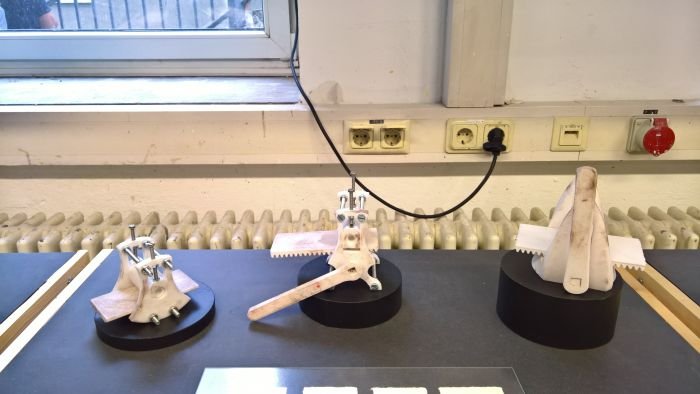
With the project Kölner Gestalterinnen under the leadership of Prof Iris Utikal KISD students researched those creatives who over the past 150 years have worked for at least part of their careers in Cologne, and who therefore have contributed to the city's creative tradition, while among the graduation projects, and so projects by those creatives who could find themselves on such a list in the future, we were particularly taken by the SonaNa-Jacket by Cornelia-Birgit Elsner, a motorcycle/scooter jacket made from Piñatex®, a material created from pineapple leaf fibres, and intended more for urban use than high-speed Highway 66-esque tours; Nathalie Martin developed with Thermodul a modular insulation system designed to be fitted inside buildings, and therefore applicable to buildings with protected/important/interesting facades, a situation shared by many historic buildings, or for example many works of international modernism, and a system which in addition to insulating also allows for the integration of numerous functional possibilities; while, and moving away from objects per se, Elisabeth Fried explored the status quo of design thinking and design approaches in contemporary German public administration, thereby demonstrating a level of bravery we'd shy away from, and identifying numerous barriers to the greater use of design thinking including a lack of teaching of new approaches, overloaded systems and neglected digitalisation, all of which mean that, for Elisabeth, Germany cannot be considered part of any contemporary design revolution in government and administration.
And while the contemporary reality of German public administration may be deficient, one certainly couldn't call it shit. Unlike Andrew Saito's ceramic glaze. More or less.
Presented, appropriately enough, deep in the furthest recess of the KISD cellars, the project Sewer Sludge Ash Recycle proposes using the ash generated during sewage treatment as a glaze for porcelain. We know far too little about pottery glazes to be able to comment on the quality of the resulting glaze; however, judging from Andrew's arguments regarding the chemical composition of the ash and the finished results presented, it would appear an interesting and valid proposal for utilising the many tons of sewer sludge ash produced every day. Andrew also provide one of the higher moments of joy during our visit to the 2018 KISDparcours: sitting at a small potters wheel he turned a bowl, cup and vase quicker than we could have washed them, and certainly with more ease and grace. And thereby provided for one of those nice reminders, as with Soft Skills/Hard Skills, that while design may be a way of thinking, designers do still need some basic manual skills, be that the traditional analogue handcraft or the modern digital kind.
Full details on the Köln International School of Design can be found at https://kisd.de/
